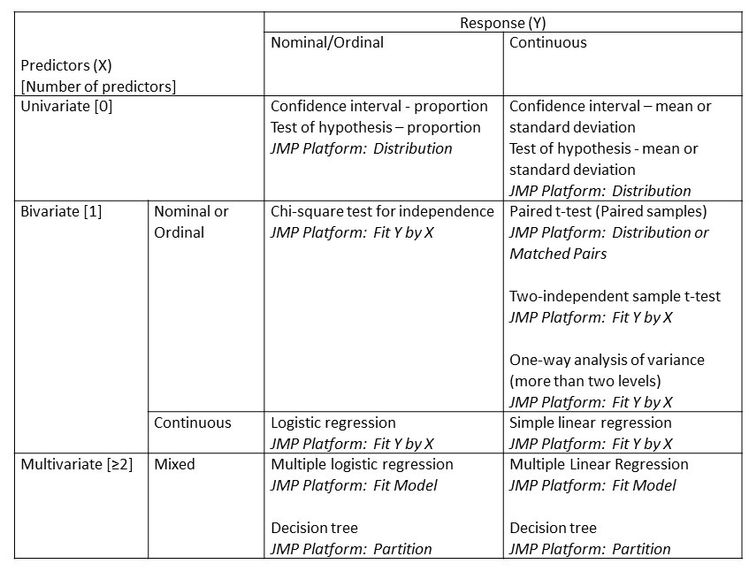This blog post is the last in a series on JMP case studies and will examine the structure of a case. My first post focused on advancing individual’s skills with case studies, and the second on classroom application.
Case study structure
The recent casebook I wrote with Patricia Schaffer, Data Management and Analysis Using JMP: Health Care Case Studies employs a framework that models real-world problem solving, and positions practitioners and students for success.
The problem-solving process is broken down into three steps as shown below.

Preparing for analysis emphasizes careful problem formulation. All too often, an inadequate problem specification leads to analysis results that don’t meet stakeholder needs, requiring rework. Data acquisition and preparation are another key part of this first step. Experience has shown that projects often underestimate the time needed to acquire, clean and prepare data for analysis.
The Analysis step begins with data exploration and summarization, something that is needed to familiarize the analyst and ultimately the stakeholders with the data used to support decision making. JMP Graph Builder and Tabulate platforms offer the analyst flexibility in producing tables and visualizations.
We often see students and beginning practitioners struggle to select appropriate analysis methods. Our cases offer a three-step approach to facilitate method selection:
- Identify the dependent variable and measurement level.
- Identify the predictor variables and their measurement levels.
- Determine what the customer needs: only a descriptive analysis, a statistical model, the answer to a question (hypothesis test), or an estimate (confidence interval).
Based on this information, a summary table, shown below, directs the practitioner to the appropriate statistical methods and JMP platforms.

Finally, the Disseminating Results step concentrates on presenting findings in the problem context that adds value to the decision making process. Targeting communication to the intended audience in the language of the problem context is key to an impactful analysis.
Case study synopsis: Nurses’ Perceptions of Evidence-based Practice: Does It Differ by Organization Level?
In this case, a 450-bed hospital conducted a survey to assess nurses’ perception of changes in their nursing culture, specifically the introduction of evidence-based practice. The problem is to see if there are differences in how nurse professionals (staff nurses) and leaders (nurse managers) perceive the implementation of these cultural changes. The survey data preparation required aggregating variables using the JMP Recode feature and assessing missing data patterns.
The pattern of responses to the rating question “All of the practice changes so far have been practical and fit well with the workflow of the unit” are visualized using Consumer Research > Categorical as shown below.

The leaders show higher levels of agreement with this statement while the nurse professionals most frequently respond with neutral. A Chi-square test shows a statistically significant difference in the patterns of agreement between these two groups.
Based on the findings, the hospital can take a number of actions to improve the acceptance of evidence-based practice. For example, have leaders received more training or do their work responsibilities allow them more time to engage in evidence-based practice? Survey limitations such as self-selection bias and missing data patterns are discussed as they apply to the interpretation of the survey results.
Here is a link to the full case.
You must be a registered user to add a comment. If you've already registered, sign in. Otherwise, register and sign in.